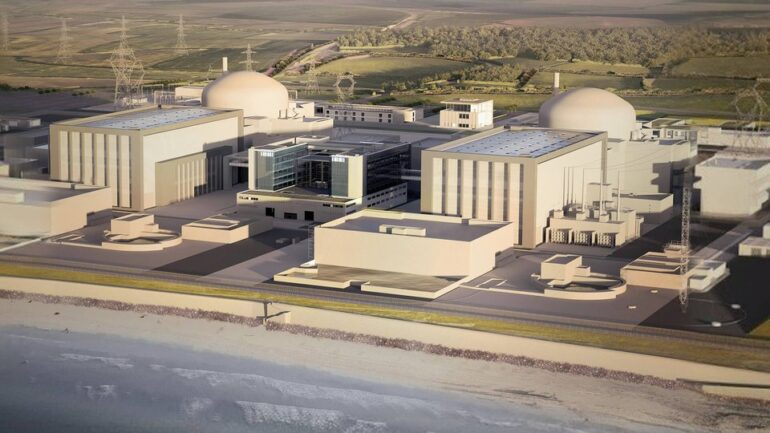TL;DR:
- UK’s ONR and Environment Agency pioneer a nuclear regulatory sandbox for AI exploration.
- AI’s growing presence in the nuclear industry prompts regulatory scrutiny.
- AI applications in reactor behavior simulation, plant maintenance, and robot operation safety.
- Recommendations include phased deployment, principles-based regulation, and human-AI interaction understanding.
- ONR collaborates internationally, shaping a universal AI regulatory approach.
Main AI News:
In a groundbreaking initiative, the UK’sOffice for Nuclear Regulation (ONR) and the Environment Agency have successfully completed a pioneering project that delves into the application of artificial intelligence (AI) within the nuclear industry. Their ambitious endeavor, a nuclear regulatory sandbox, has emerged as a testing ground to examine the potential of AI technology in this critical sector. The findings from this project are poised to shape the future of regulatory approaches to AI integration.
The landscape of the nuclear sector is evolving rapidly, with substantial investments pouring into AI technology. Stakeholders within the industry are actively seeking engagement with regulatory bodies to align their visions with the evolving regulatory landscape. ONR’s diligent horizon scanning activities have underscored AI as a prominent trend, yet the field lacks established best practices that can serve as a benchmark for regulating AI effectively.
AI holds the promise of revolutionizing the nuclear industry by simulating reactor behavior and offering insights crucial for reactor design, performance optimization, safety enhancement, and operational efficiency. However, this transformative technology also presents unique challenges that demand careful regulation. Currently, there exists a dearth of relevфant best practices, leaving regulators in uncharted territory.
To address this pressing issue, ONR convened a panel of experts specializing in the regulation of AI. This esteemed panel identified two specific AI applications within the nuclear sector that warrant further exploration within the regulatory sandbox. These applications focus on AI’s role in ensuring precise and targeted plant maintenance and facilitating real-time AI-driven support for robots operating in confined spaces.
The regulatory sandboxing approach empowers industry stakeholders to collaboratively explore how innovative AI proposals can transition seamlessly into real-world deployment. This process involved sprint workshops to scrutinize critical aspects of deploying AI in these two application domains, encompassing safety, security, and environmental considerations.
The groundbreaking sandbox pilot, a first in the world of nuclear regulation, emphasizes the need for a clear articulation of AI’s benefits, particularly in comparison to traditional technologies. Equally vital is the comprehensive understanding and management of any associated risks through robust frameworks. Additionally, evaluating the reliability of AI systems stands as a paramount concern.
Key recommendations outlined in the report include a phased approach to AI system deployment to build confidence and experience, an evaluation of whether a principles-based regulation approach is more suited for AI applications due to their diverse considerations, a recognition that existing training data may become obsolete when transitioning AI systems to new operations, and the need for a hazard analysis for each deployment mode. Furthermore, it underscores the significance of comprehending the complexity of human-AI system interaction and advocates for skill development and guidance through harnessing AI expertise, sharing operational experiences, and promoting a culture that prioritizes safety, security, and environmental concerns.
ONR’s commitment to sharing the insights garnered from the sandbox pilot extends beyond its national borders. The outputs from this pioneering initiative are being integrated into ongoing AI-related efforts within the UK’s nuclear sector and shared with the broader regulatory community.
In a remarkable development, the project has sowed the seeds for an international regulatory sandbox concept, with ONR and the Environment Agency actively exploring possibilities with the OECD Nuclear Energy Agency. Collaborative efforts are also underway with the US Nuclear Regulatory Commission and the Canadian Nuclear Safety Commission to draft a ‘principles paper’ on AI regulation.
This international synergy is poised to play a pivotal role in shaping a universal regulatory approach to AI, complete with comprehensive guidance and relevant best practices. Tom Eagleton, ONR’s Head of Innovation, expressed his enthusiasm, stating, “The sandbox pilot has provided us with a novel tool to encourage innovative solutions while upholding safety, security, and our regulatory independence. This achievement is the result of cross-regulatory collaboration, and we eagerly anticipate further collaborations with the Environment Agency to ensure a unified approach to innovation.”
Conclusion:
The successful completion of the nuclear regulatory sandbox project underscores the UK’s commitment to harnessing AI’s potential in the nuclear sector while ensuring robust regulation. This pioneering effort not only sets a precedent for effective AI integration but also positions the UK as a leader in fostering innovation while upholding safety and security standards. It signifies the growing importance of AI in the nuclear market, prompting regulators and industry players worldwide to develop a universal regulatory framework to guide AI’s transformative impact.

